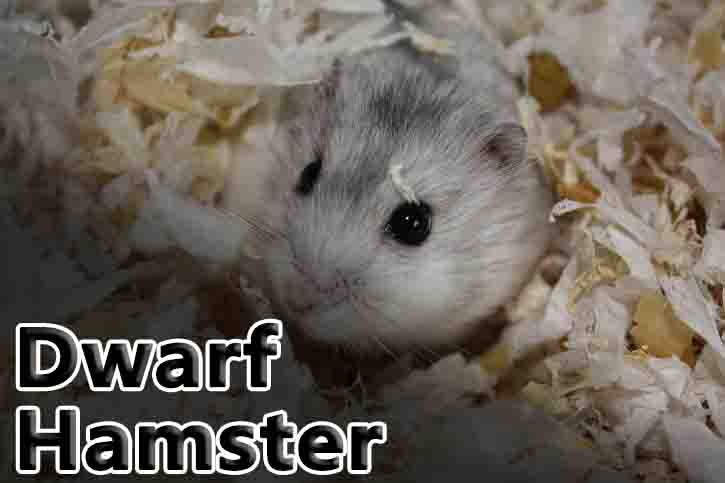The Basics
Dwarf hamsters have short tails, stubby legs, and stout bodies. In general, they measure two to three inches in length, although some are smaller. Seven of the species belong to the genus Cricetulus, while the remaining three belong to the genus Phodopus. Dwarf desert hamsters are the smallest dwarf hamsters, measuring just two to four inches long!
Throughout Europe and Asia, dwarf hamsters are found. Their range extends from central Europe to Siberia, Mongolia, China, and Korea in the north. Syria and Pakistan are part of their southern range. These animals live in arid regions such as deserts and scrubland, as well as mountainous areas and forests. There is a specific range for each species.
They eat seeds, grains, fruits, berries, and invertebrates, as well as seeds, grains, and invertebrates. There are different diets for different species depending on their habitat. Some of these hamsters forage only at night because they are nocturnal. Other species are active during the day, especially at dawn and dusk.
While these animals do not hibernate in the winter, they will enter a period of inactivity called torpor, which can last from a few days to a few weeks. Their breeding season lasts from April to October. A female can have between two and five litters during this time. After a short gestation period, which lasts only 13 to 22 days, each litter can have 1 to 13 young. It is the female’s responsibility to care for the young, who are born hairless and blind.
It is possible for dwarf hamsters to be preyed upon by a wide range of species, including foxes, weasels, snakes, and owls. In addition to being prey for several species, hamster populations are also threatened by humans. Due to the disruption of their habitat caused by agriculture, these animals are at risk. As they destroy crops, some farms even treat them as pests and trap or poison them.
Pet Trade
Due to their relatively low maintenance requirements, hamsters have become popular pets over the years. Additionally, they are fairly easy to tame and are more social than other hamsters, which allows them to be kept in pairs of the same gender without any problems. Four species of dwarf hamsters have been domesticated:
- The Campbell’s Russian dwarf (Phodopus campbelli)
- The winter white Russian dwarf (Phodopus sungorus)
- Dwarf Phodopus roborovskii (Roborovski dwarf)
- Cricetulus griseus (Chinese dwarf)
Roborovski dwarf hamsters are just 2 inches long, making them the smallest! It was first discovered and described in 1903 by scientists. Their natural habitat is the deserts of central Asia. Fast-moving hamsters can be challenging to handle because they move so fast.
Campbell’s dwarf hamsters are probably the most commonly kept dwarf hamsters.
Their appearance is very similar to that of winter white dwarf hamsters. On July 1, 1902, the first hamster was collected in Mongolia. Hamsters are crepuscular, meaning they are most active at dawn and dusk.
Interesting Insights from Dwarf Hamsters
These little mammals are often well known because several species are kept as pets. However, they also display some fascinating examples of biological adaptations that enable them to survive in the wild. Let’s take a closer look.
Food Storage
Hamsters are excellent diggers and construct burrows underground where the temperature is more stable. The tunnels usually have multiple entrances and are made up of several chambers.
Wild hamsters have to cope with times when food is scarce. To do this, they gather as much food as they can and store it for times when food is difficult to find. This keeps them alive during periods of food deprivation. One adaptation that they have evolved to help them be more efficient in collecting their food for storage is their cheek pouches.
Hamsters have two cheek pouches, which are expandable sack-like structures in their mouth that they can use to carry food. The hamster can gather and carry a week’s worth of food in these spacious cheek pouches and take it back to their burrow. There is can be stored in one of the chambers in its burrow that was built for this purpose.
Scent Glands
Hamsters have extremely poor eyesight. Instead of relying on their vision to find their way back home after they have been out gathering food, they rely on another mechanism. Hamsters have scent glands located on their backs that secrete a specific smell that they can identify.
To find their way around and mark where they have been, they rub their backs against objects as they move about the environment. When they are finished gathering food, they follow the scent as a trail guide back to their burrows.
Continually Growing Teeth
Hamsters, like all rodents, have two incisors that continue to grow throughout their life. This ensures that they can keep their teeth sharp and that they regrow if they break them.
To prevent their teeth from causing damage to their mouths or lips, hamsters must gnaw on wood and other hard substances to ensure that their teeth remain a good length.

